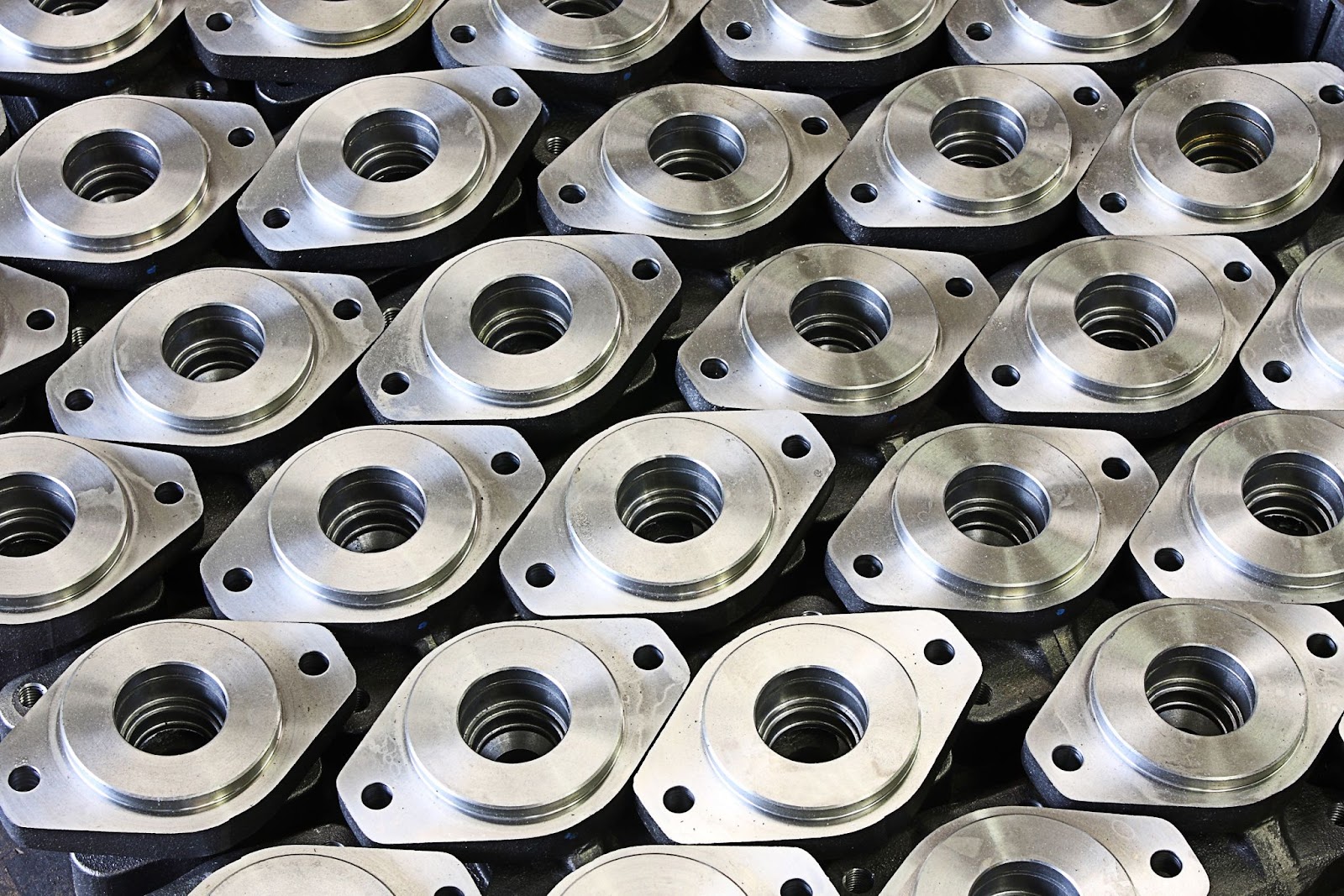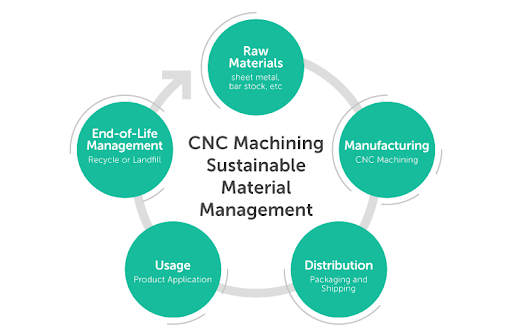Time to read: 6 min
Introduction
The concept of and applications for Computer Numerical Control (CNC) machining are mainstream in modern manufacturing and are used to make products in a range of sizes & varying dimensions. However, production CNC machining is volume-dependent.
Mastering CNC production entails learning how to efficiently utilize a CNC machine to produce large quantities of components. This article is a comprehensive guide that covers the many types of CNC production machining and details the best cnc machining services offered by Fictiv for scaling CNC machining production conveniently.

What is CNC Machining?
CNC machining is a computerized manufacturing technique that relies on pre-programmed code and software capabilities to regulate how cnc machines operate, including grinders, cnc lathes, cnc mills, and turning machines. Each of these machines can be used for cutting, shaping, and fabricating components for both prototypes and finished products. CNC machinists create a diverse array of metal and plastic components during CNC machining operations, blending their skills in mechanical systems, mathematics, and an expert understanding of technical drawings.
What Is CNC Production Machining, and How Is It Different from CNC Machining?
CNC production machining leverages multi-axis CNC machines to achieve high-volume production with tight tolerances, superior dimensional accuracy, plus high quality and reliability within the production deadlines. CNC production machining is a more sophisticated, elaborate, and high-volume manufacturing process than standard CNC machining.
CNC machining parts for production emphasizes precision, elimination of internal scrap, and enhanced product quality and throughput, to boost both the bottom line and customer satisfaction.
What Are the Different Types of CNC Production Machining?
1. Low-Volume CNC Machining
Low-volume CNC machining refers to a type of facility that focuses on fully produced components in limited quantities. The description generally applies to fewer than ten up to one thousand parts in most cases. Low-volume (aka small-batch) CNC machining is gaining in popularity because:
- It fills the gap between the original product design concept and the scaled production of prototypes
- It reduces costs
- It’s available to more companies in the early stages of product development
- It performs well for products with short lifecycles
- It makes it relatively easy to customize designs
2. High-Volume CNC Machining
High-volume or large-scale CNC machining is employed for mass-scale, high-quality material production for a thousand parts or more. This is the optimal production method for many businesses because it allows them to cut costs while still obtaining an abundant supply of parts. High-volume CNC machining is a widely-employed production technique due to its lower cost, reduced labor dependency, and greater accessibility.
3. Custom or Prototype CNC Machining
Custom or prototype CNC machining is typically employed for smaller quantities during new product development (NPD). New CNC machining and custom manufacturing technology have enabled customers to leverage CNC machining for prototyping. This means that CNC-machined prototypes can be made earlier in the design process, which provides functional prototypes with the same look, feel, and function as the final product.
In addition, CNC machining is a popular choice for custom part manufacturing. The same modern advances that make CNC machining a good choice for prototyping also make it a good fit for custom part manufacturing. CNC machining is an affordable option for custom and prototype machined parts.
What Are the Benefits of CNC Production Machining?
Some key advantages of CNC machining for production include:
1. Improved Productivity
CNC production machining increases productivity since it relies more upon a computer-operated system than upon manual effort and capabilities — it ensures higher productivity levels through automated, comprehensive manufacturing operations running at scale. Computer programs are also able to optimize things like cutting speed, order of operations, and material usage in a way that is highly intelligent and productive.
Here are some tips to increase the productivity of your CNC machining process and improve the productivity of CNC machining when outsourcing CNC parts:
- For complex CNC machined parts, consider machining only a few faces of the raw material to prevent additional fixturing steps and additional time required for the machining process.
- If you’re doing your own CNC milling, consider utilizing a high-pressure coolant system or coatings for tooling/tool holders to prolong the life of your tooling.
- Improve production line organization from raw materials to final inspection by employing techniques such as kanban, 6S, or lean manufacturing. Although they seem like huge undertakings to implement, these methodologies will pay off and can be broken down into a series of smaller projects.
- Follow design for manufacturability (DFM) feedback to increase the productivity of your CNC part manufacturing. Machining experts can provide tips that’ll reduce the amount of time it takes to machine your parts and save you time and money.
2. Minimum Material Wastage
Using CAD/CAM (computer aided manufacturing) software programs, CNC technology enhances production machining by determining the most effective tool paths, finishing procedures, and cycle times per a given product’s requirements. CNC simulation programs also help determine the best machining techniques before utilizing various machine tools for cutting to reduce material wastage and internal scrap.
If your goal is to use materials efficiently and reduce waste, consider a sustainable approach to CNC machining to reduce the negative impacts of climate change. A 2022 Deloitte survey found that 89% of executives agree there is a global climate emergency, so a sustainable approach will make your customers happy while boosting your bottom line.

3. Less Manpower
CNC machining is much less labor-intensive than manual production methods, whether for high or low-volume production. As a result, the labor costs and expenses of CNC machining are substantially reduced. This doesn’t mean that workers aren’t needed, just that only experienced workers are required to supervise the manufacturing operations.
There are also some design techniques to reduce the amount of manpower needed to manufacture your CNC parts:
- Swap complex assemblies for single components. Can the parts be machined from a single stock of material instead of assembled?
- Reduce the complexity of fixturing required for your parts as this reduces the manpower required to set up and fixture your parts.
- Reduce manufacturing steps wherever possible to reduce the amount of processing your CNC parts require.
- Smaller runs and custom parts cost more in manpower, so machine larger quantities to reduce per-part costs.
Pro-tip: Check out our CNC Machining Design Guide for more tips on reducing your parts’ complexity.
4. Increased Profitability
Continuous, repeatable machining operations are a key feature of CNC machines that greatly increase output. Also, the CNC machining technique is a low-oversight method of manufacturing. The machines can work without pausing for breaks or double-checking dimensions for accuracy.
Both low and high-volume production methods make the most of this quality and leverage CNC machining’s economic benefits to expand their operations. Some in-built features that make CNC machining more cost effective than conventional techniques include:
- CNC machines don’t require multiple types of equipment or switching between tools, which allows a swift transition between machining processes. The time spent setting up is decreased and throughput is increased.
- Several sensors built into CNC machines contribute to increased precision and reliability. Using this data, the machining process can be acclimated to produce higher-quality components while saving on costs.
As a result, precise CNC machine shops can shorten their product delivery lead times and save money on labor costs, which makes them more competitive in the market and boosts revenue and profitability.
Which Industries Can Benefit the Most from CNC Machining for Production?
The precision and consistency of CNC manufacturing allow for the mass production of almost identical, high-quality components for industries that have stringent accuracy standards:
- Automotive – Machining extruded metal into gearboxes, cylinder blocks, axles, valves, and other components fot the automotive industry
- Aerospace – Machining fuel access panels, fuel flow components, and landing gear components
- Medical – Surgical instruments, orthotics, electronic housings, and implants fot the medical industry
- Robotics – The robotics industry has stringent standards for the accuracy and precision of manufactured parts, making CNC machines indispensable due to their capability to comply with tighter tolerances.
- Consumer products – CNC machining is efficient for designing, developing, prototyping, and manufacturing consumer products like toys, household appliances, consumer electronics, packaging prototypes, and more.
Conclusion
As you can see, CNC production machining can boost your company’s bottom line by producing more, at a higher quality, with fewer workers. So, now is the time to evolve your business and leverage CNC production machining to the fullest.
And Fictiv can help you do it.
For all your custom CNC part manufacturing needs, Fictiv has you covered. We’re experts at machining any CNC parts in a variety of materials, and we simplify custom part sourcing with intelligent, streamlined, automated workflows. Fictiv is your operating system for custom manufacturing that makes part procurement faster, easier, and more efficient.
In other words, Fictiv lets engineers, like you, engineer. Create an account and upload your part to see what our instant quote process, design for manufacturability feedback, and intelligent platform can do for you. Our CNC machining service can create your parts in as little as 2 days!










